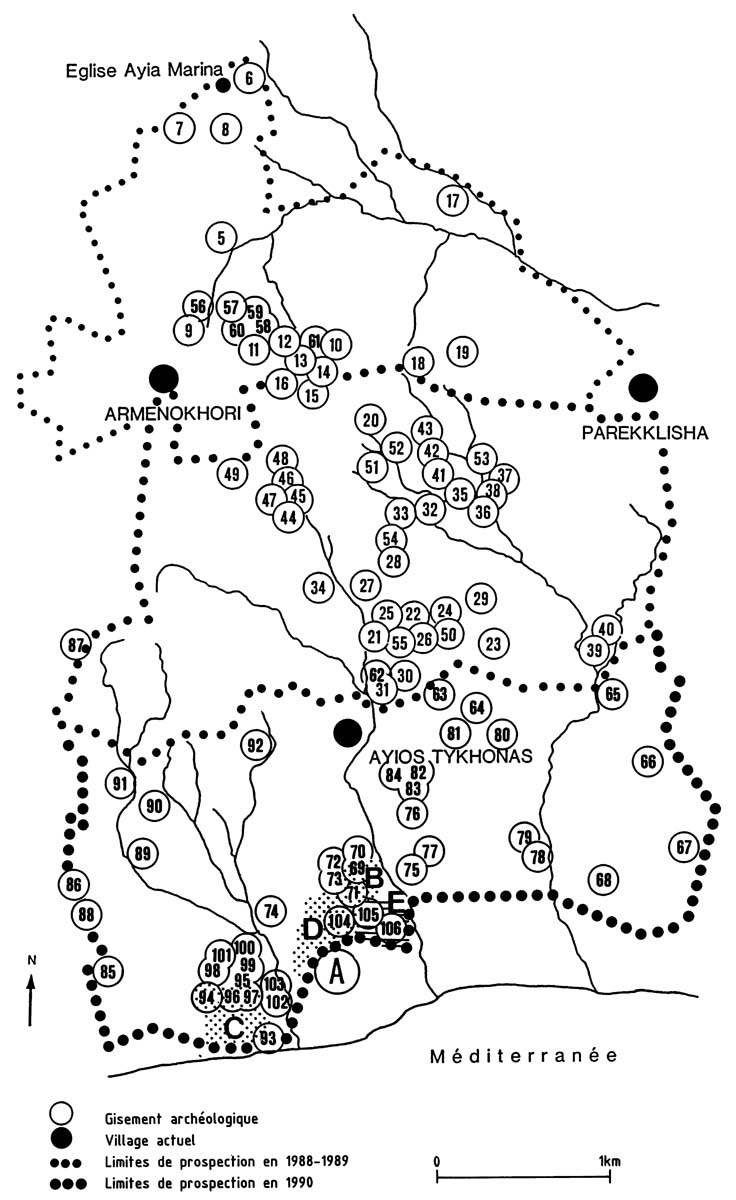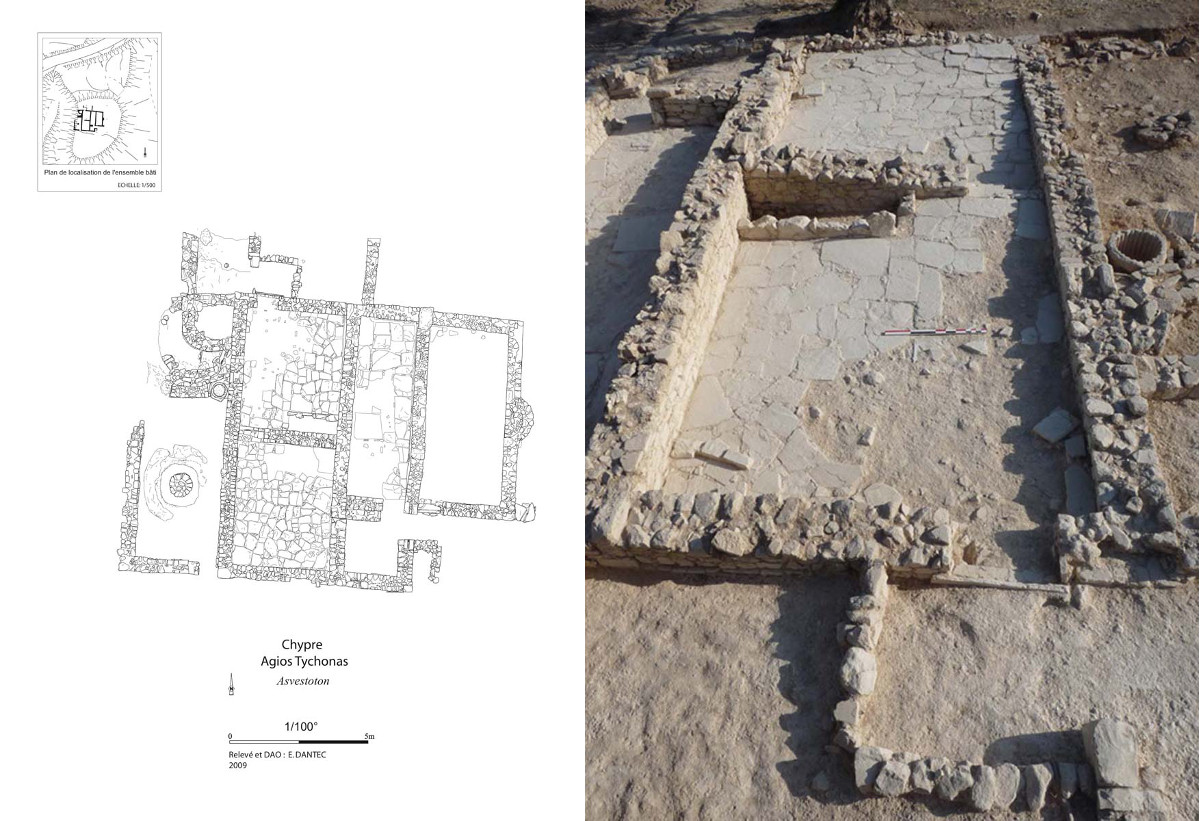Systematic exploration of the hinterland of Amathus was conducted within the framework of a survey covering the area of the present- day municipalities of Agios Tychonas, Armenochori, Parekklisha and Pyrgos – that is to say altogether a surface area of 2700 hectares. The findings of this study have greatly regenerated our knowledge of the Amathus region and have also brought to light the first traces of human activity on the island from the 9th millennium BC. The digs conducted at the sites of Shillourokambos (1991-2004) and at Klimonas (since 2011) received remarkable exposure thanks to the discovery of the oldest settlements known to Cyprus.

Map of the sites identified during the survey (Ch. Petit-Aupert, P. Aupert / Archives EFA, 21301)
If the following periods (Chalcolithic and Bronze Age) have been scantily documented, the countryside of Amathus was once again inhabited as of the beginning of the Geometric period. The population density is especially important during the Hellenistic period. It is not until the Early Christian period that the Amathus area would know another such apogee. The sites that were uncovered are connected, on the one hand to agricultural development (farms, silos, cisterns) and on the other, to extractive operations (limestone quarries, mines). Sometimes they skirt along necropoleis and sanctuaries, which indicate the existence of settlements in the vicinity.

Agios Tychonas-Asvestoton, building of the Early Christian period (E. Dantec)
In the environs of the city of Amathus a number of factors have contributed to help better define the relations between the urban center and its environment, notably what touches on the expansion of necropoleis, the water system and the localization of several sanctuaries beyond the city limits. Among the latter that of Agios Tychonas-Asvestoton, localized thanks to fragments of terracotta figurines of Phoenician type were the object of a limited excavation in 2008. For want of a precise localization of the sanctuary, the excavation brought to light a settlement from the Early Christian period whose excavation was completed the following year. For the time being its nature eludes all interpretation: dwelling, religious building or more likely an agricultural facility? The building, made up of five rooms and covering a surface of approximately 170 square meters, was doubtless abandoned without haste as attests the scant material gathered at the time of the Arab incursion of the mid- 7th century AD.
A. Cannavò, trans. A.M. Schroth-Daskalakis
